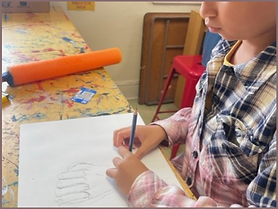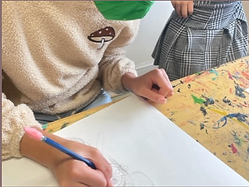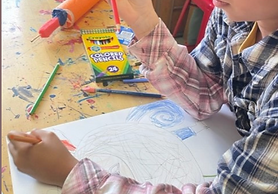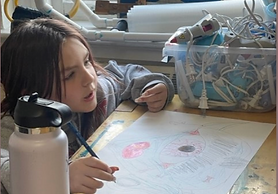MayKou Ly
Art Educator
Contemporary Issues
in Art Education
Double Helix
Servicing Learning
Agamograph Lesson Plan
“This is a school that allows students to construct their own knowledge through projects and explorations without sacrificing the need to build requisite skills. We meet children where they are; we know where they need to be, and we honor multiple ways of getting there”
(Double Helix, 2022).
Collaborative Drawing
"My Agamograph"
An Agamograph is a type of art form created by drawings/images that change from different angle. This type of art was created by Yaacov Agam, a well-known artist for using this technique to create an optical illusion and kinetic art.
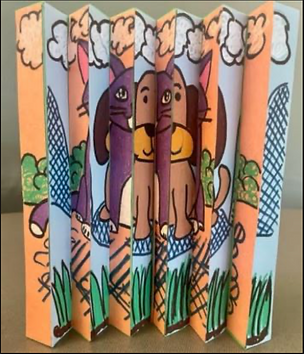


Reflection
After listening to each group's experience at Double Helix, it still felt a bit intimidating not know how the students were, but it was a great experience. The art project Mattie and I had was for the students to create an Agamograph with two different drawings, opposite from one another. We brought some examples and few instruction handouts. It was a great experience not knowing what to expect, so that we can learn what we would need to do better next time. The timing was nervous at first, but we were able to manage it while setting a timer and letting the students know how long they would have left to finish their drawings before moving on to the next step.
The students were able to finish with their Agamograph by the end of the class and to help cleaning up with materials. What we lacked was to spend a few more minutes on instruction and ask students questions about the steps making sure they were actually paying attention and following instructions. Not knowing how the students were going to react with the art project, I did ask them "how they thought the level of difficulty of creating an Agamograph was?" Couple students said it was a medium level while older students said it was too easy. Because timing was so short, we had to keep their drawings as "open drawings" but opposite of each other.
It was great to see how the students used their critical thinking of what kind/type of opposite drawings they were going to draw. I was pretty impressed how they were able to draw and colored (few of them) their drawings within a 15-minute time frame. I was more concerned about the drawings than the cutting, gluing, and folding part. Overall, I believe Mattie and I did good, but there is always room to learn, to grow, and to improve.
Reflection
Introducing the students to collaborative drawings was such a great idea! At first, they were not so sure that we had in plan for them, but we asked them if they could define what "collaborative" means. It was interesting to see their creativity in drawing while being timed. One thing for sure that we forgot to mention was not to draw anything that was inappropriate on other students' drawings. Students' reactions were probably the best once they received a new drawing as they had no time to think, but just to continue the drawing. I believe it was successful for the second time, and I would have liked to see them one more time to get to know them a little bit more.
The set timing really did go by fast, 3 minutes may seem long, but it is not much time to draw resulting in making the collaborative drawings even more interesting. The students' reactions really showed they enjoyed the project, and they often asked who drew this character or funny shape. The end result of each collaborative drawing from each student came out interestingly funny. I personally think their 3-minute drawings turn out really great because I was just so fascinated by what was added to the drawing.
"Collaborative Drawing"
"Creative expression to bring students
altogether to build a sense of community as they work together on an art project."

